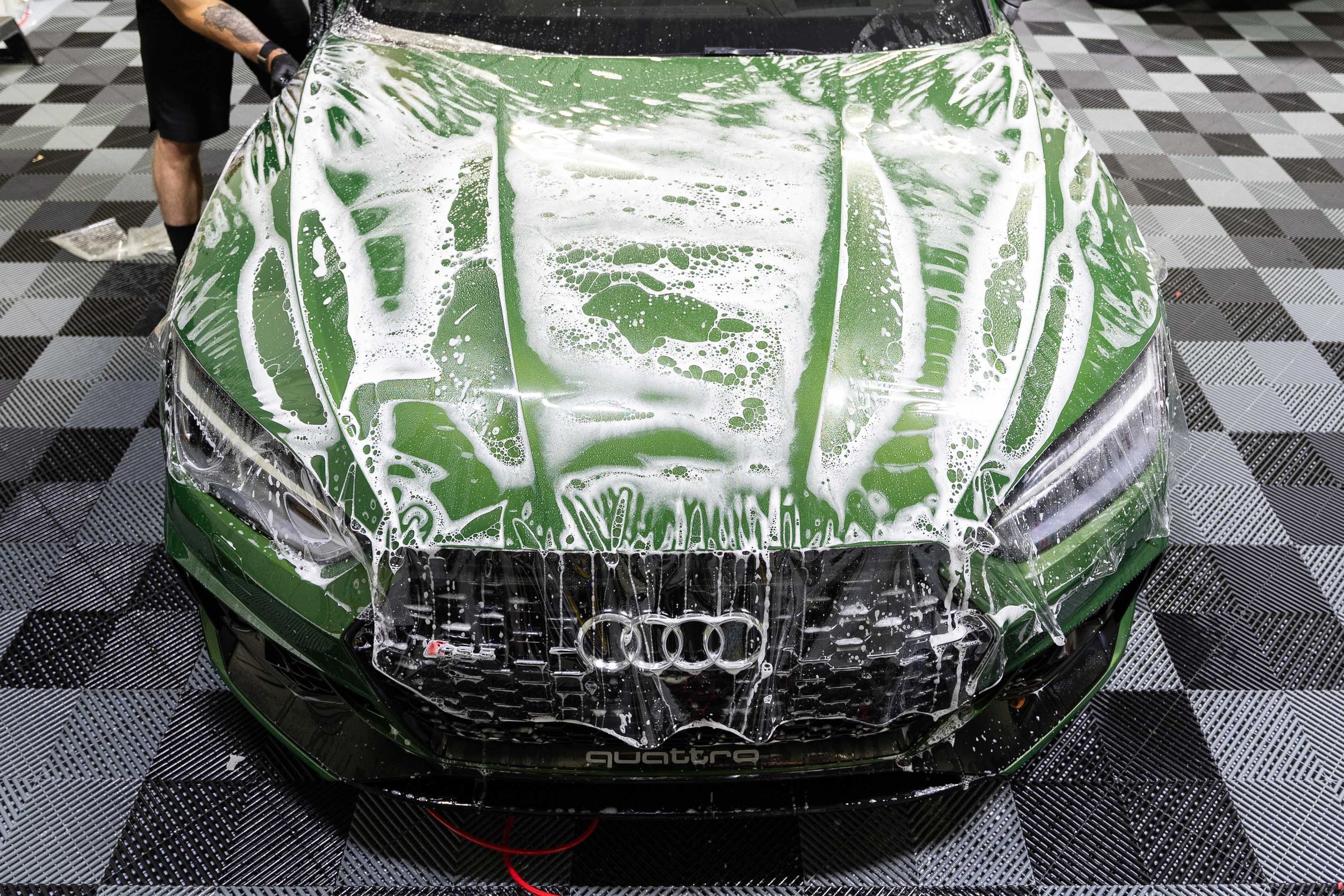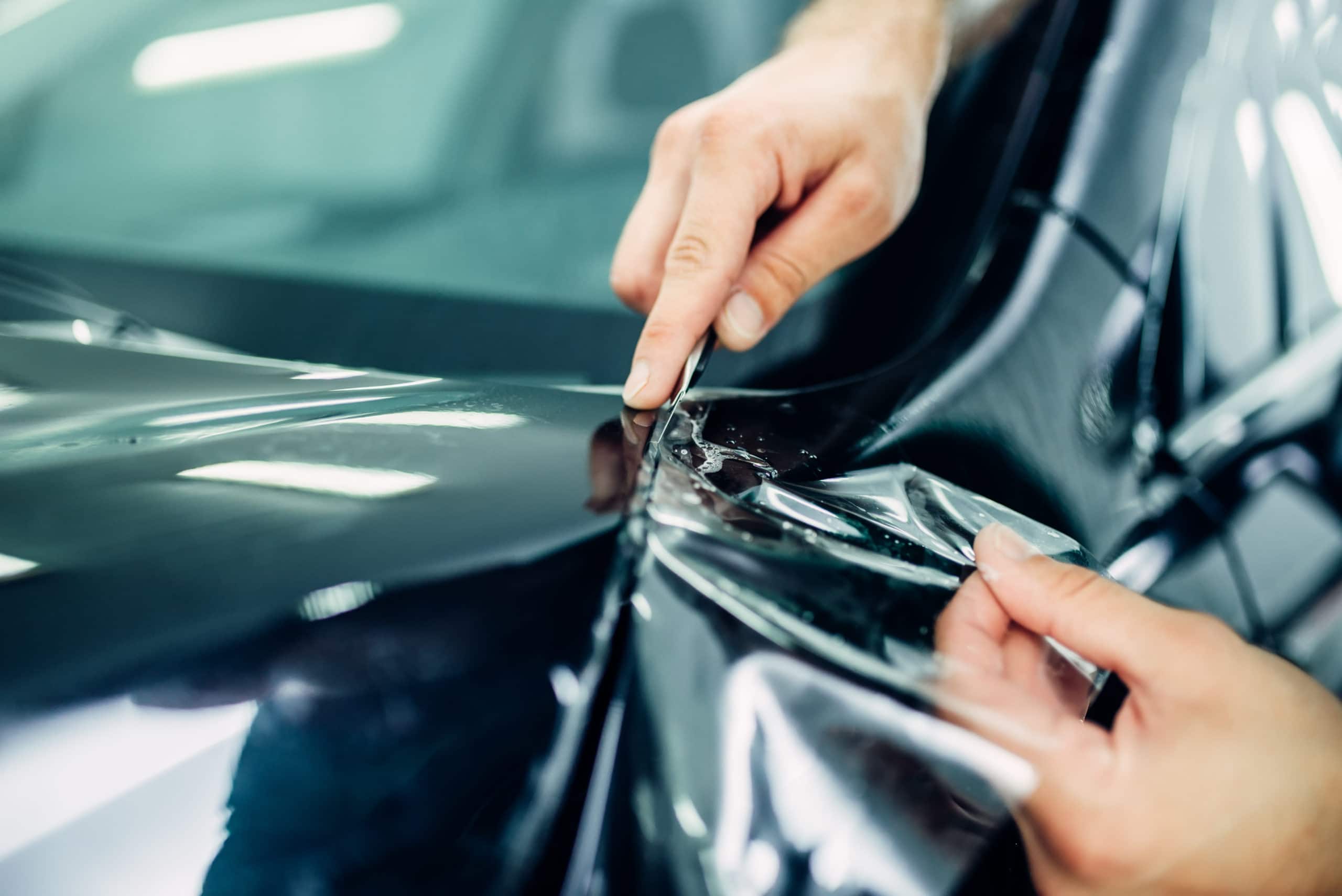The Lifespan of Paint Protection Film: How Long Does It Really Last?
The Lifespan of Paint Protection Film: How Long Does It Really Last?
Blog Article
The Significance of Paint Security Movie in Preserving Your Lorry's Finish
Paint Defense Film (PPF) emerges as a crucial gamer in this field, providing a virtually unseen shield that combats the day-to-day dangers of the road. This leads us to contemplate-- what makes PPF a vital option for car fanatics and proprietors alike?
Understanding Paint Protection Film
Paint protection film (PPF), usually described as a "clear bra," is a thermoplastic urethane movie applied to the repainted surfaces of automobiles to guard them from damage triggered by rocks, pests, and small abrasions. This innovative movie is meticulously crafted to ensure ideal quality and is developed to be basically unnoticeable when properly applied. It functions as a sacrificial layer, soaking up the impact of everyday risks, consequently preserving the vehicle's beautiful appearance.
PPF is commonly made up of multiple layers, each serving a particular feature. The leading layer is a clear coat that offers a shiny coating while improving UV resistance, protecting against the movie from yellowing with time. Beneath this, the urethane layer offers the primary protective barrier, offering flexibility and strength. The adhesive layer is engineered to permit secure attachment yet makes sure very easy removability without harming the underlying paint.

Advantages of Using PPF
While keeping the pristine appearance of an automobile is a priority for numerous proprietors, making use of paint protection film (PPF) supplies several vital benefits. PPF acts as a durable barrier, securing the car's paint from roadway particles, rocks, and small abrasions that can occur throughout normal driving.
PPF supplies a protective layer that mitigates the effects of these components, lowering paint fading and keeping a shiny surface area over time. Furthermore, PPF is created to be practically unnoticeable, guaranteeing that the original shade and layout of the automobile stay prominently displayed without change.
In addition, the self-healing properties of innovative PPF add to its charm. When subjected to warm, the movie can fix minor scrapes and swirl marks, making certain the automobile preserves a flawless outside. Collectively, these benefits make PPF an essential device for car conservation.
How PPF Functions
To comprehend the effectiveness of paint security film (PPF), it is crucial to dig right into its structure and application procedure. PPF is composed of a multi-layered product, usually polyurethane or a comparable polymer.
The application procedure of PPF is thorough, calling for skilled technicians to guarantee a view seamless and bubble-free surface. Applied with a specialized adhesive, PPF is thoroughly placed and extended over the desired areas.
As soon as mounted, PPF offers a nearly unnoticeable barrier that preserves the vehicle's original paintwork, keeping its visual appeal and resale value gradually.
PPF Vs. Various Other Safety Options
When thinking about car paint security, owners have numerous alternatives, each with its distinctive benefits and constraints. Paint Protection Film (PPF) is renowned for its robust protective high qualities, offering a nearly unseen obstacle that shields versus straight from the source scrapes, chips, and environmental contaminants. Its self-healing buildings additionally boost its value, enabling minor abrasions to disappear with direct exposure to heat.

Plastic wraps, while offering visual customization, do not naturally safeguard the underlying paint from chips or scratches, making them less suitable for pure defense purposes. Each option suits different requirements and budget plans, yet for those focusing on thorough, long-term protection, PPF stands apart as the exceptional selection. Its mix of durability, self-healing technology, and minimal maintenance demands makes it a recommended option for protecting a lorry's beautiful coating.
Tips for Maintaining PPF

In enhancement to routine washing, periodic inspections are essential. Examine the movie More Info very closely for any kind of indications of lifting or bubbling, particularly around the sides. Quickly resolving small problems can stop them from developing right into significant issues. If you recognize areas that need fixing, speaking with a professional installer is recommended to ensure appropriate handling.
Moreover, while PPF gives superb security versus UV rays, car park your lorry in shaded locations whenever possible can further expand the movie's life expectancy. Take into consideration applying a specialized PPF sealant for added defense versus environmental contaminants.
Verdict
Finally, Paint Security Film (PPF) functions as an essential component in maintaining a car's visual and monetary worth. By giving a virtually invisible obstacle, PPF efficiently protects against damages from road particles and environmental variables. Its self-healing residential properties even more improve its utility by guaranteeing minor abrasions do temporarily mar the car's surface. When compared to other safety measures, PPF supplies exceptional defense and longevity, making it an important investment for preserving a vehicle's finish gradually.
Report this page